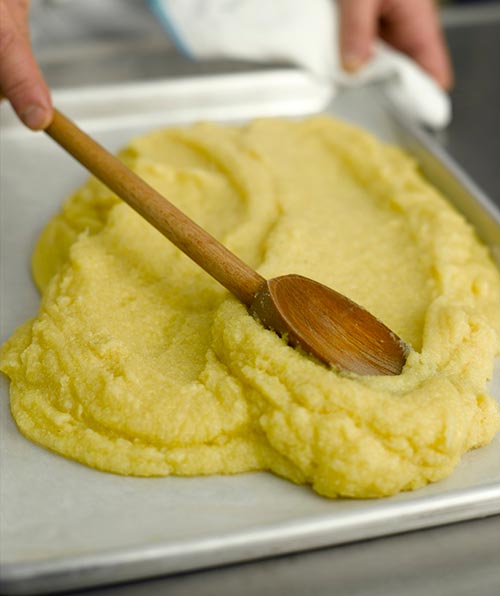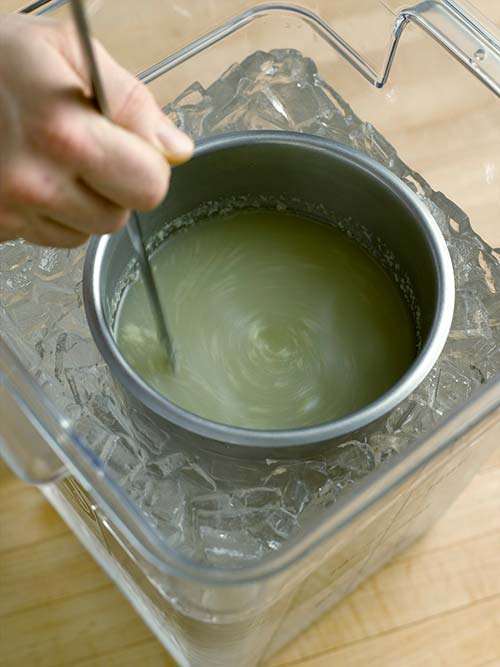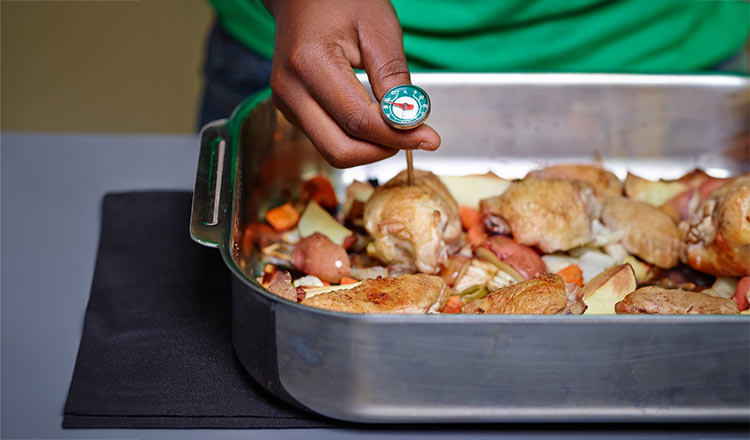Food safety is of the utmost important in professional kitchens, and there are some basic strategies you can follow in your home kitchen to ensure the food you cook is not just delicious, but also safe from cross-contamination and pathogens.
One of the fundamental defenses against pathogens is the observance of strict time and temperature controls. Generally, the disease-causing microorganisms found in foods, with the exception of E. coli 0157:H7, need to be present in significant quantities in order to make someone ill. Once pathogens have established themselves in a food source, they will either thrive or be destroyed, depending upon how long foods are in the temperature danger zone.
There are pathogens that can live at all temperature ranges. For most of those capable of causing food-borne illness, the friendliest environment provides temperatures within a range of 41° to 135°F—the temperature danger zone. Most pathogens are either destroyed or will not reproduce at temperatures above 135°F. Storing food at temperatures below 41°F will slow or interrupt the cycle of reproduction.
When conditions are favorable, bacteria can reproduce at an astonishing rate. Therefore, controlling the time during which foods remain in the danger zone is critical to the prevention of food-borne illness. Foods left in the danger zone for a period longer than four hours are considered adulterated. Additionally, the four-hour period is cumulative, meaning that the meter continues running every time the food enters the danger zone. Once the four-hour period has been exceeded, heating or cooling cannot recover foods. For this reason, it is very important to have a quality thermometer to check the internal temperature of your food.
Keeping cold food cold is generally easy: keep items in the refrigerator until it's time to use them. Serve cold items over water baths or on chilled plates, checking the temperature to ensure all foods are kept chilled to below 41°F. Defrost frozen meats and foods under cold running water, and never on the counter or in a bowl of stagnant water. The same is true for foods that are hot and being served hot. Keep the food hot over a low stove, in a warm oven, in a slow-cooker, or in a chafing dish with a heating element.
Where it gets tricky is when we make something hot that needs to be cold, whether for storage or serving. Potatoes for a cold potato salad, beans to freeze for later, and leftover rice are all foods that can develop pathogens if left to cool too slowly. It may be tempting to leave the food on the counter to cool naturally, but this may mean the hot foods sit in the temperature danger zone for too long. Instead, try one of these strategies:
- Surface area is your friend, so give your food some room to breathe. Spread your cooked foods on a baking sheet or in a low-walled casserole dish to cool, stirring occasionally to release stem and expose hot spots to the air. This greater surface area means your food will cool much faster, preventing too much time at dangerous temperatures. This strategy is great for ingredients like grains, beans, and other chopped veggies, as well as cooked custards and creams, but you can also use it for soups, stews, and sauces with a little care.

- If you don't have the space to spread out your foods to cool, an ice bath might be your best option. Fill a bowl or container with ice water (for really big pots, fill a cooler or other clean utility tub) and place your pot, bowl, or container into the bath. Stir frequently for even cooling. For particularly big batches, like when making stock or tomato sauce, it might be helpful to work in smaller batches to help cool more quickly.

- Think beyond the kitchen, especially after a long day of cooking. Our kitchens retain a lot of heat, and moving your cooked items to a drafty or well-circulated room can make a huge difference. Use pies cooling on a window-sill as your inspiration, but of course keep an eye out for contaminants, like pets, bugs, and hungry fingers.
- It may not seem like much, but placing your pot, bowl, or storage container on a cooling rack will help to circulate air and cool the bottom of your item more quickly than sitting on a counter or hot stove.
- If you have a spare refrigerator or freezer, you can use that to more quickly cool your item, but be careful: putting a very hot item into a cold refrigerator will reduce the temperature of the space and put your other foods at risk. Only cool food in the fridge or freezer if it is mostly empty or only filled with beverages and non-perishable foods.


